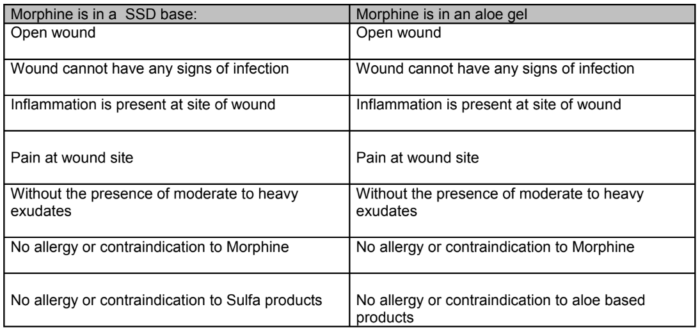Topical Morphine for Wounds in the Hospice Patient
Goals
- Increase Quality Of Life (QOL) by decreasing pain at the site of a wound.
- Decrease pain from wounds and the dressing changes related to the wound(s) by utilizing topical Morphine.
- Taper oral opioid dose to decrease systemic side effects of the oral opioid if wound pain decreased or controlled by topical Morphine.

CONTINUA LEARNING
Simplify Your Hospice Team’s Training and Skill Building
A complete solution for your agency: more than 125 hospice courses, caregiver in-services, training plans, and more.
Morphine can be mixed in a Silvadine (SSD) or Aloe gel base. If the patient described the pain as burning, tingling, prickly, a silvadine base is recommended. If the patient did not use those terms to describe their wound pain, the Aloe gel base is the recommended choice.

Range of dosing is: MSO4 0.25% in SSD/Aloe base (with or without 1 – 2% Lidocaine). Amount to be ordered is 60 – 400 gm.
Orders should be written to change dressing twice a day and PRN: PRN determined by patient choice.
Pain is to be assessed before and after dressing change using the 0 -10 numerical rating scale. Nurses should document the new onset of nausea, confusion, constipation, rash, myoclonus, sedation or respiratory depression with use of topical morphine or decrease of the above symptoms as an oral opioid is decreased or discontinued.
* Note: These are wound care guidelines only. Consult with the primary physician and pharmacist for specific orders. Follow the wound care policies and procedures in your organization.
If you found this article informative and useful share it with your friends and colleagues.
